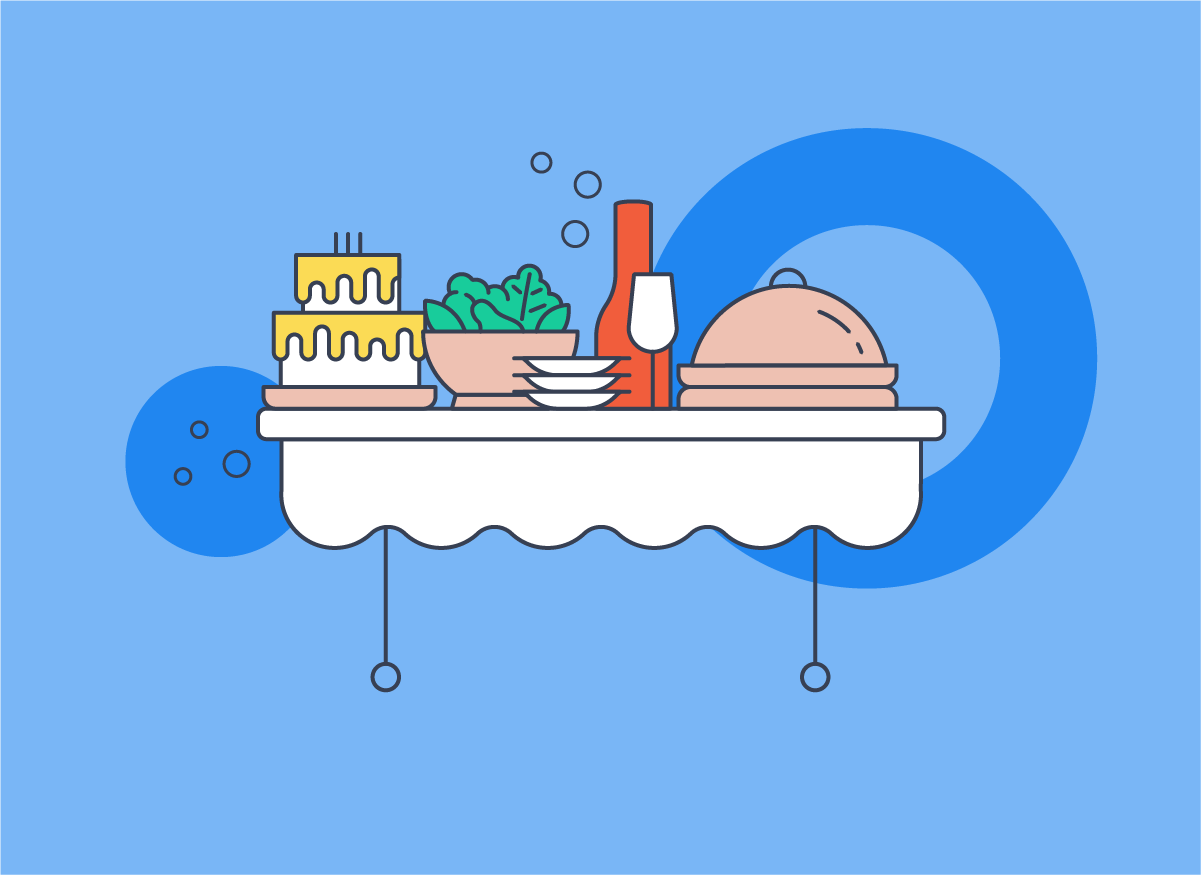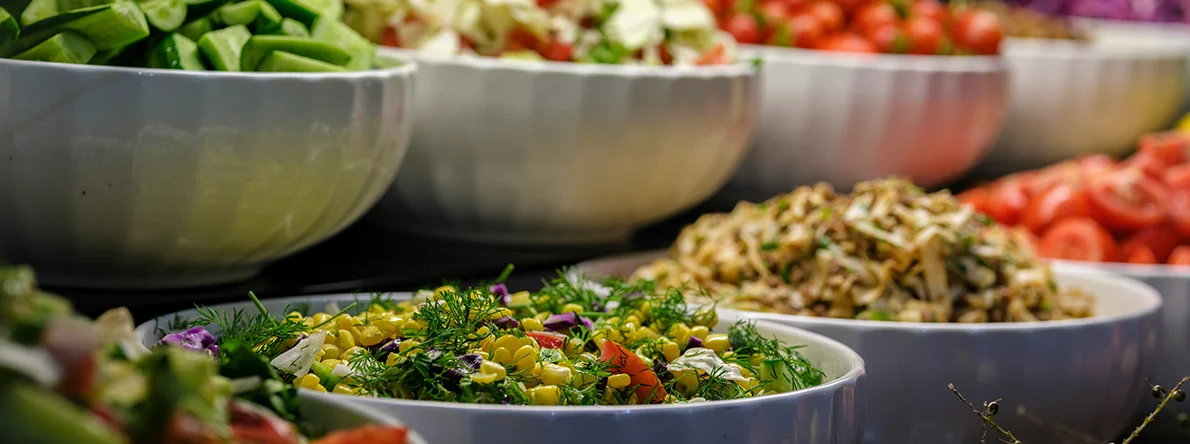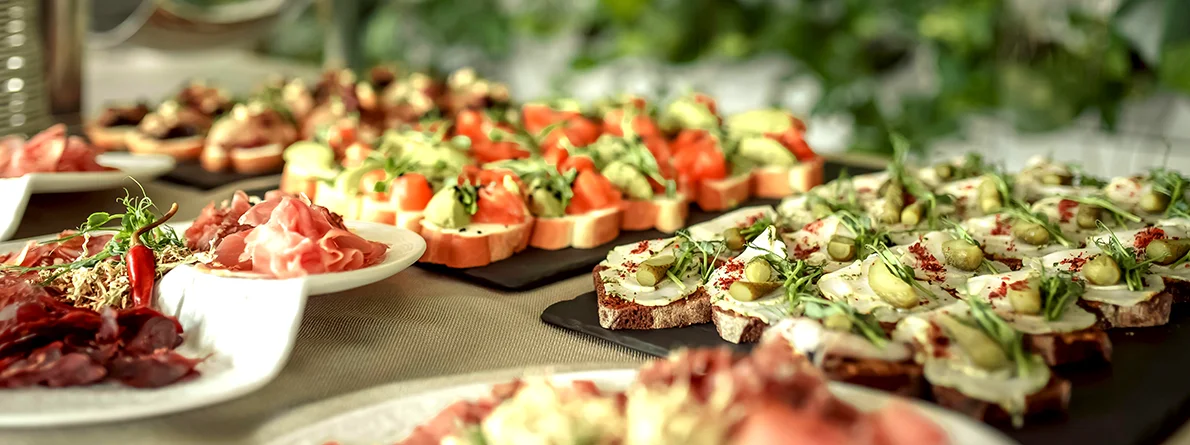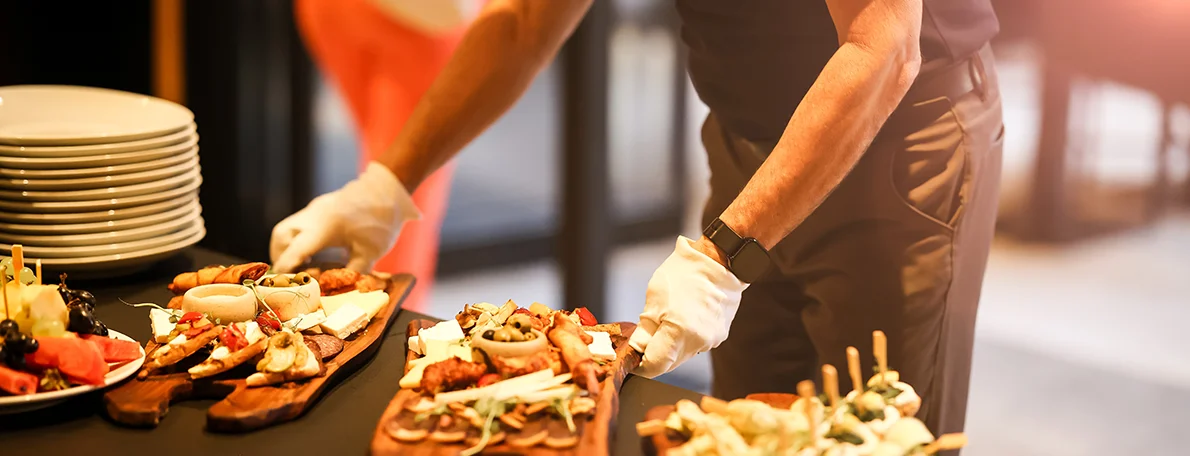
Most employees look forward to their lunch break. But that can be a different story for the person in charge of coordinating a group lunch order for the office.
If you’ve been in that situation, you know that organizing delivery for a large group requires thinking about factors like diet restrictions, timing, and the specific event that it’s for. This can quickly become overwhelming for office administrators if they don’t have a system in place to manage the process.
The right approach to ordering lunch for your workplace revolves largely around budget and making sure everyone has an option they’ll enjoy. So whether you’re feeding 50 or 500 people, having steps in place to streamline lunch time will make everyone's day less stressful.

Check out the four step process below and learn how to order lunch for a large group the easy way.
The type of occasion or meeting you're planning for should guide your lunch choices.
Something like an all-hands learning session calls for easy to eat options like sandwiches and salads so your team can focus on the speaker without worrying about breaking their flow to get extra napkins.
If you’re ordering for a last minute meeting, you’ll need to keep in mind that many restaurants need advance notice for large orders. If you're ordering on short notice, you may need to keep a running list of places who can accommodate quick turnarounds.
You’ll have the most freedom for informal lunches without presentations or laptops and can choose something that matches the mood you want to create. For example, you can get comfort food to boost morale during a tough week, or someone’s favorite local restaurant to celebrate a specific win.
There’s no end to the types of lunches you might order for large groups. But to keep it simple, think about the occasion and let it guide your decisions. This will help you make better choices throughout the entire group ordering process.

Lunch delivery for large groups can get expensive fast if you’re not careful.
Ideally, a manager or executive will have already told you what your budget is. If not, it’s worth asking so you don’t accidentally order something that costs three times as much as your accounting department is expecting.
If you don’t get guidance or you’re responsible for setting the budget, use this table as a starting point:
You can also reach out to local restaurants and see what they'd charge to feed a specific amount of people. Even if you don’t end up using them, it may help you better understand what your overall group lunch budget should be.
Not all lunches are designed equally when it comes to cost - but having a predetermined budget in place for the recurring meetings or office events will keep you from overspending and underlivering.
ro tip: This is where beginners make the biggest mistake. They order way too much, it comes in over-budget, and up to 30% or more gets thrown out. Working with a company that can manage lunch delivery for your office eliminates waste and optimizes spending.

This step is mostly up to you and is where your decision can be highly impacted. The service you choose will determine how much time you spend coordinating and the types of food available.
There’s really three main options when it comes to lunch delivery:
Keep these questions in mind when making your final decision:
As you navigate ordering processes for the office, you'll learn which services deliver on time, which can handle the volume, and which are worth the investment. Start with what makes sense for your situation, but don't be afraid to switch if something isn't working.

Now that you know how you’re ordering, it's time to place the order and coordinate delivery and setup. As a good rule of thumb, always order early.
Not only will restaurants appreciate it, but they’ll be much more likely to have your order ready on time (or delivered when you requested it). Of course, sometimes an early order isn’t possible, and you might have to call around looking for a restaurant that can have lunch ready by the time you need it.
If you’re working with a professional catering service or a restaurant that accepts individual orders, you may be able to send a single email or submit one form with orders from everyone, saving you a ton of time and hassle. But not every restaurant can accommodate this.
The main thing to know is that you should order as early as you can and be prepared for push back from the restaurant. If they’re slammed on a particular day or out of an ingredient, they might have a tough time meeting expectations. The longer you’ve been ordering lunch for large groups, the better you’ll be at knowing what to prepare for.
If you’re catering lunch for the office, you can’t forget to think about where it will be set up. It’s surprisingly easy to forget about serving food when you’re trying to coordinate everything else!
The space you’ll need depends on many factors. For example, if you’re doing a lunch-and-learn or eating during a meeting, you may need to plan on eating in a specific room, regardless of how convenient it is for serving.
In general, you’ll want at least a few tables. Enough for a serving table and room for seating each employee. The tables should be clean and spaced out enough that everyone won’t be running into each other when they try to get their plates.
Remember that you’ll need to set out the food before anyone starts eating, so if the delivery is scheduled for 12:00, don’t tell people that lunch is at noon. Give yourself at least a few minutes to get everything set up (or, if they provide this service, to let the restaurant’s delivery crew get it ready).
Of course, these rules change in different situations. If you’re providing boxed lunches for everyone, you might just need a small table where people can grab their preferred type of lunch and take it somewhere that’s convenient.
Don’t forget that serving is also followed by cleaning up. If you can recruit one or two employees to help you, this process will be much easier.
Ordering lunch for big groups is a surprisingly complex process when you’re doing it yourself. But with experience (or some help), you’ll get to be really good at it.
To help speed up that process, we have a few tips for you. These are drawn from the experience of long-time food orderers as well as a few of our own mishaps.

With large groups, it’s hard to keep track of what people are allergic to or will refuse to eat. Keeping a spreadsheet with this information can save you from excluding someone from an important team lunch.
So start early. As soon as you know that you might be ordering lunch for a large group, ask people for a few pieces of information and get them into a spreadsheet:
In the email that you send out, it’s probably worth defining “strong dislikes” and “favorites.”
Strong dislikes are things that might keep someone from enjoying a meal with the team. If one of your employees hates mushrooms so much that they would skip out on a piece of supreme pizza, they should put “mushrooms” in that column. If they would definitely eat a slice of supreme but would never order one for themselves, it probably shouldn’t be noted.
“Favorites” is more open to interpretation. It might be someone’s favorite local restaurant, their favorite cuisine, specific foods, or anything else. One person might list a local deli while another one writes “cheese.”
You don’t have to satisfy everyone’s favorites with each meal (in fact, you don’t have to satisfy anyone's favorites with any given meal). But your employees will feel recognized and included if you can take that information into account when you’re planning.
Want a spreadsheet that will take care of this for you? We have one! Just click here to download it.
Did no one take a slice of carrot cake from the available desserts? Did one person eat quite a bit more than you expected? Are people crowding around the salad bowl while showing less enthusiasm for the enchiladas?
All of these are worth noting. During and after every large-group lunch you organize, take a couple notes. Even if it’s just which foods went over well and which didn’t, you’ll have useful information for the next time you order.

You can get into a regular rotation with the meals you order, and that’s totally fine (though you may want to opt for a unique catered lunch idea every once in a while).
On certain occasions, you’ll want to think carefully about what you’re ordering. Have you had a lot of dreary weather lately? Try something fun like a macaroni and cheese bar. Is the air conditioning in your office broken? Order a cold lunch with some ice cream for dessert to cool everyone down.
Are you having a nine-hour meeting day? Include a couple healthy snacks that people can take with them for the afternoon.
Every once in a while, give some extra thought to what you’re ordering. There doesn’t always have to be an occasion. Your employees will really appreciate it and feel valued and that tends to translate to improved productivity throughout the afternoon.
Every catered lunch has to be cleaned up, and if you’re feeding a lot of people, that can be a pretty big job. Make sure you always have someone to help by establishing a cleanup rotation. It’ll save you the time of recruiting someone every time you order lunch.
Put up a sheet of paper somewhere in the office with everyone’s name (in pairs, if you have a really large group) and the dates they’ll be expected to lend a helping hand to clean up. It’s a simple idea that can go a long way.

Ordering lunch for the office is a great way to show that you appreciate your employees and want to take care of them.
Fooda makes the process effortless by:
If you’re after a comprehensive workplace dining program that will have employees excited to come to work. From daily lunch delivery to Popup restaurants and full cafeteria replacements - Fooda has a solution that meets your needs.
Design your own Fooda program with our calculator and contact us when you’re ready to make your workplace lunch breaks something everyone will look forward to.
Group lunch ordering typically costs $10-25 per person, depending on the food type and service. Traditional buffet-style catering usually runs $12-18 per person, while individual boxed lunches cost $10-15 per person. Fooda offers transparent, predictable per-person pricing with no hidden delivery fees or service charges.
Traditional catering provides platters or buffets from a single restaurant, which means limited variety and potential "menu fatigue" for recurring lunches. Group delivery through apps allows individual orders but requires heavy coordination and results in multiple delivery fees. Fooda combines the best of both and removes the hassle.